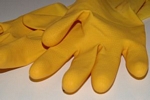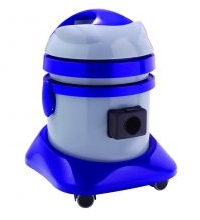Mold Removal and Remediation
Hiring a Professional for Mold Removal
If the size of the mold growth in your home is greater than 10 square feet (about 3 feet x 3 feet) the EPA says you should hire a professional mold removal service.Even if the area of mold growth is smaller it's still best to hire a professional. This way you can be certain that the mold will be completely removed without contaminating the rest of your home. Hiring a professional will also ensure that the mold will not come back and that your symptoms will disappear.
A mold professional can also inspect and test for mold in your entire home. This way you can be sure that all mold growth will be found and removed, even if it is hidden.
If you have toxic mold in your home then it's important to hire a professional, even if the mold growth is small. If toxic mold is not removed in the right way it can spread dangerous mycotoxins throughout your home. See Black Toxic Mold Removal if you have toxic mold in your home.
Fix Water Problems Before Mold Removal
Before removing mold you need to fix any water problems in your home. It would be a waste of time to remove mold only to have it return because you still have a moisture problem.Protective Equipment for Mold Removal

Protective clothing should cover you completely. After the mold removal you should throw away the clothes or else wash them straight away. Also wear gloves to avoid touching mold with your bare hands.
Wearing eye protection such as goggles will prevent mold spores getting in your eyes. And a mask or N95 respirator will keep you from breathing in the mold spores you stir up.
Do not remove the mold yourself if you are badly allergic to mold. Instead find someone else to do it, or better yet, hire a professional.
Sealing Rooms before Mold Removal
When you are removing a lot of mold from a room you need to contain the mold spores. You don't want the many spores you stir up to spread through your home.So before you begin removal, seal the room off from the rest of the house. Cover doorways and other openings with plastic sheets. Use duct tape to attach the sheeting to walls or the ceiling.
Negative Air Pressure During Mold Removal
In the room you're removing mold in, the openings to the rest of the house should be sealed airtight. However you should open a window to the outside and set up a fan to blow air out through the window. This is so that most of the mold spores which are stirred up will be blown straight outside of your home.Removing the Mold
The next step is to remove the mold growth. Scrub any mold from surfaces using water and detergent. But lightly wet the mold growth before you start scrubbing. This will stop many of the mold spores escaping into the air. Mold spores become airborne more easily if they are dry.You can use just water and detergent to remove the mold, or you can use mold killing products like bleach if you like. However, dead mold spores are still allergenic. So the main goal is to remove the mold, whether you kill it or not.
Some good mold killing solutions are:
You can completely remove mold from non-porous surfaces. However, porous materials can't be completely cleaned of mold. So drywall and other porous materials usually need to be removed and replaced.
When you dispose of moldy items or building materials take them outside by the shortest route, eg through a window.
Removing Mold from Items
As with buildings materials, if you have non-porous possessions with mold on them it's usually easy to remove. Scrub any moldy non-porous belongings with detergent and water. This should completely remove the surface mold. You can then return them to your home and keep using them.Unfortunately if you have porous belongings with mold on them they will probably have to be discarded. Usually these items can't be completely cleaned of mold or it's more difficult than it's worth. However if you have items which are valuable to you then you could ask a professional mold specialist about having the mold removed.
Clothes, bedding or curtains which were in rooms with mold can still be used after you wash them thoroughly in the washing machine. If fabric itself had mold growing on it you can usually still wash the mold out by using mold killing products in the wash. See Mold on Clothes for more about how to do this.
Cleaning Up After Mold Removal
Once you've taken care of all the mold in a room the next step is the final clean up. This is where you remove as much of the residual mold and spores as possible. This is to prevent the mold returning and to get rid of any symptoms the mold was causing you.Clean any surfaces around where the mold was growing. You don't have to use a mold killing product. Water and detergent or other household cleaning products will also work fine. Once all the surfaces are completely dry you can vacuum the room.

HEPA Vacuuming After Mold Removal
The final step is HEPA vacuuming. After you have finished removing the mold you can then HEPA vacuum up the mold spores left in the room. Only use a HEPA vacuum since non-HEPA vacuums will spread mold spores into the air. For more information about HEPA vacuums visit Vacuum Mold.HEPA vacuum the floor and any other surfaces which can be vacuumed practically. You may also want to use a carpet washer in carpeted rooms to be extra thorough.
After Cleaning Up
After you have completely removed the mold problem in a room you can then move onto any other rooms with mold. You should remediate each room separately and set up containment of the room completely before you start.Repeat the mold removal process separately for each room that has mold until you have removed all the mold in your home. Once all the mold has been removed and all the water problems have been fixed the mold removal process is complete. If the removal was successful any mold symptoms you were suffering should start to disappear.
To test if the mold removal was successful you should inspect your home for mold or water problems a short time after the removal. For instructions on inspecting for mold visit Mold Inspection.
You can have mold testing performed as well fairly soon after the mold removal to be sure that mold is no longer a problem in your home. Read more about mold testing at the Mold Testing page.


